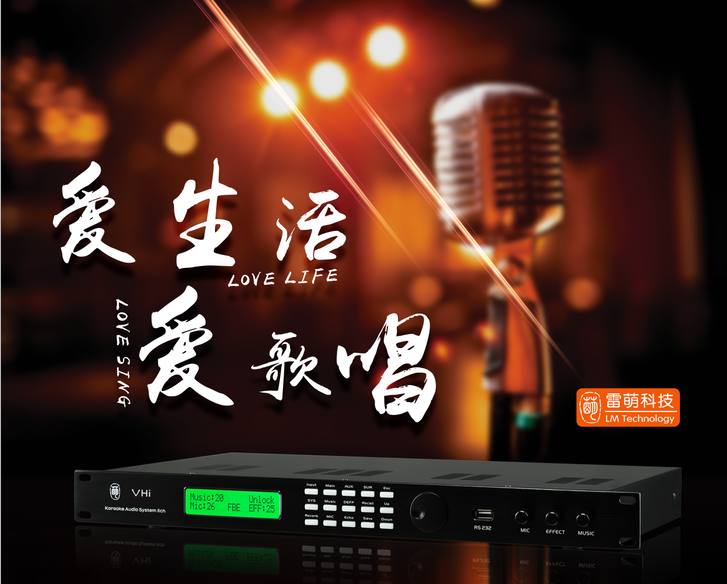Adjustment of Equalizer in Professional Audio
Release Time:
2022-09-24

In the professional audio system, the equalizer is one of the most commonly used devices. This device can divide the audio frequency 20Hz-20KHz into 31 frequency points, and control them effectively. Compared with other devices, the control accuracy is higher, and the professional expansion The Audio system really enjoys using this device. However, how to use the equalizer effectively is not an easy task. It mainly depends on the use occasion of professional audio, and the debugging method of the equalizer is also different in different environments.
1 The role of the equalizer in the Audio reinforcement system in professional audio
At present, in the professional Audio reinforcement system, the most basic equipment is a mixer, a power amplifier and a speaker. An equalizer is essential to get a very good Audio reinforcement effect. The main reason is that the original configuration of the amplification equipment cannot meet the needs of all situations, and the acoustics of the surrounding buildings cannot always reach an ideal state. murmur. Therefore, in order to effectively solve the above acoustic problems, it is necessary to have an equalizer. It can be seen that the equalizer has an important position in professional audio, and it is also irreplaceable by other equipment.
2 The main purpose of the equalizer is analyzed The application of
the equalizer in professional audio mainly involves three aspects: supplementing the problems and deficiencies of the audio system, overcoming the resonance phenomenon that may occur in the room and suppressing howling.
2.1 Improve the frequency response characteristics and Audio source signal quality
of professional audio The loudspeaker system in professional audio occupies a large proportion of investment, and it will have the most direct impact on the audio system and the quality of Audio reproduction. Among them, electro-acoustic indicators can determine the Audio amplification quality. Therefore, some low-end professional audio equipment often have obvious problems. Judging from the electro-acoustic indicators in the PA system, the parameters of the tuning belt and the power amplifier are basically ideal, and the weakest part is the speaker system. At this stage, although my country's electronic field has developed very rapidly, significant achievements have not been achieved in Audio design and speaker units, and the characteristics of a single speaker are not ideal. Especially for some large-caliber low-end speakers, due to the cost factor, the frequency response of the speaker unit is relatively narrow, and the Audio pressure balance is low. Secondly, the quality of the internal frequency divider is poor, so the Audio will inevitably have problems. The main problem is that the frequency Audio pressure is obviously insufficient and the intermediate frequency is not clear enough. The most effective way to solve such problems is to improve the frequency gain through an equalizer.
At present, the most commonly used Audio source is network digital Audio source, such as MP3, MP4, etc. This form of Audio source is subjected to high-fold digital compression, which will have a certain impact on the quality of the Audio source, and the high and low audio will appear to varying degrees. Therefore, the Audio source signal can be compensated by the equalizer, thereby improving the quality of the Audio source signal.
2.2 Overcome the possible Audio frequency resonance
in the room Generally, professional architectural acoustics design is not carried out in the indoor Audio reinforcement place. Therefore, resonance phenomenon may occur during the use of audio equipment, and the low frequency resonance phenomenon will not only greatly reduce the amplification At the same time, it will seriously damage the balance of the indoor Audio field. If the resonance phenomenon cannot be effectively solved, even the best audio equipment cannot obtain the ideal amplification effect. Although we can suppress the resonance phenomenon by changing the indoor environment and adding some Audio-absorbing materials, it is difficult to implement in some indoor situations and is not operable, mainly because once the change occurs, it will have a serious impact on the indoor environment. It is also unacceptable to the use of the unit, and then the equalizer can be used to solve the resonance phenomenon generated when the audio is amplified.
2.3 Suppress Audio feedback phenomenon
When the microphone is amplified, it may produce howling, which is also the most difficult thing for professional tuners to prevent. Because once the whistling phenomenon occurs, the atmosphere of the scene will be seriously damaged, and the audio equipment may also be damaged to a certain extent, especially the speaker system in the audio equipment. If it is not solved in time, the speaker unit will even be burned. , resulting in irreparable losses. Although the Audio feedback suppressor has appeared at this stage, its price is very expensive, and it is difficult to promote and popularize it.
3. Equalizer debugging methods
According to the actual use requirements of professional audio, the corresponding equalizer debugging methods will also be different. Usually, white noise, pink noise and live field test software are used for debugging work with professional measuring instruments. However, most professional audio users do not have the above conditions, so some conventional debugging methods will be discussed and analyzed next.
3.1 Compensate for professional audio defects and restore digital audio sources through equalizers
For large-caliber speaker systems, some relatively low-end professional audio systems will basically have insufficient mid-range Audio pressure, so they need to be boosted in the mid-frequency. There may be more than one frequency point, usually a continuous frequency band, and the specific width of the frequency band needs to be determined according to professional audio. In the debugging process, a sine wave low frequency signal transmitter can be used to output a sine wave signal with changes through practice, and then use a high-fidelity broadband microphone to pick up the specific size of the Audio output Audio pressure, and then measure the required compensation. The frequency point or frequency band is generally controlled after 3dB.
For the compensation and debugging method of digital audio source, it mainly compensates it according to the phase characteristics output by professional audio playback equipment. There is no corresponding unified standard. The longest use is to adjust the high and low frequencies. Only in this way can we maximize the , which in turn enhances the fullness and clarity of the bass.
3.2 Elimination of Indoor Resonance by Equalizer In
general, the room does not take into account the architectural acoustics problem, and indoor resonance often occurs due to Audio amplification, especially the low-frequency resonance is the most obvious. Solving the indoor resonance phenomenon is also very simple, as long as the resonance frequency is measured and then attenuated by the equalizer. The low-frequency signal transmitter can output a sine wave signal with a continuously changing frequency. When the resonance phenomenon occurs, the Audio pressure during this period will be very large, so the frequency value of the low-frequency signal transmitter can be recorded, and then find the similar frequency on the equalizer Click to remove it.
4 Conclusion
To sum up, although the role of the equalizer is great, it is necessary to fully understand the use status and existing problems of professional audio, so as to give full play to the value of the equalizer. Therefore, professional audio users need to actively strengthen their research, deeply understand the function and value of professional audio equalizers, and understand the purpose of equalizers. Only in this way can they effectively deal with some defects in professional audio use through equalizers.
Related News














